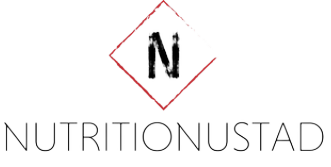Biohacking or DIY biology is a method of making small diet or lifestyle changes to improve a person’s health, well-being, and abilities.
The most used biohacks are those that have the benefits of achieving weight loss and improving brain functions. Before starting biohacking you should be well informed and cautious about how it works.
This article describes the types of biohackers that exist, and how to do biohacking to enhance its benefits and what are its contraindications.
What is biohacking?
By definition, biohacking is the use of knowledge in biology and technologies to improve or optimize the functioning of the human metabolism .
The key to being a biohacker is to make dietary changes and health monitoring. Some types of biohacker use technologies to achieve better results.
A biohacker does not test all the new devices and supplements he finds on himself, but knows how to use them. In addition, one of the fundamental principles of biohacking is to follow up the results with laboratory analysis.
Types of biohackers
There are several types of biohacking, each one comes with different benefits for the body. The most common types of biohackers are:
1. Nutrigenómicos
Nutrigenomics are the type of biohackers that focus on how food interacts with genes. The idea of nutrigenomics is to optimize and personalize nutrient intake with a person’s gene expression. To do this type of biohack, a genetic mapping is done, then the diet is adapted; and finally, it is evaluated whether or not there is an improvement in feelings, thoughts and behaviors.
2. Grinders
Grinders are the types of biohackers who aspire to robotize or hack your body through technologies, injections or implants. The first record of this type of modification was in 1998, Kevin Warwick was the first human to insert a chip into his body.
3. DIY scientists – Biotechs
DIY biohackers are the highly educated types of biohackers. They are usually people with postgraduate degrees and experience in scientific fields. These are the biohacking experts and they are the ones who develop tests and techniques to help beginners.
Does biohacking work? – Profits
Some types of biohacks are backed by solid scientific evidence and have health benefits. These are methods that have been tested and improved over years of experimentation. For example, clinical trials have shown that meditation can help reduce anxiety, chronic pain, and regulate cortisol levels in the body. (1)
Similarly, some eating methods like intermittent fasting can successfully optimize human metabolism. The proven benefits of intermittent fasting are: regulate blood sugar levels , eliminate obsolete cells in the body, regulate body weight, reduce the risk of certain types of cancer. (2.3)
Regarding biohacking in nutrigenomics, the main benefits of combining genetics with diet are still controversial, although promising results have been seen in cancer prevention. (7) While research is not yet conclusive on this type of biohacks, it is considered a safe type for health.
How to do biohacking at home? – Beginner’s guide
A beginner in biohacking should start with simple hacks, for example in nutrition – eating or influencing circadian rhythms. Other hacks with insufficient scientific evidence to back them up might not only not work but be actually dangerous for the body. Here are some biohacking tips that are considered safe and can be tried at home:
1. Intermittent fasting
The intermittent fasting is a food method which consists in regular food refusal cyclically. The benefits of fasting are to stimulate cell regeneration, regulate the feeling of hunger, eliminate body fat, and reduce certain types of cancer.
2. Foods with tryptophan + sunlight
Tryptophan is one of the raw materials for well-being hormones. Combining foods with tryptophan with taking sunlight ensures the synthesis of the related hormones serotonin and oxytocin .
3. Meditate 15 minutes a day
Meditating for 15 minutes a day is a basic method of biohacking. The meditation , can regulate stress levels and improve the perception of a person to problems.
4. Drink caffeine
The caffeine is a compound known to improve productivity. It is recommended that you drink caffeine at the same time each day and keep track of how you feel in the minutes and hours afterward. Try adjusting the amount until you find the one that works best for your goal.
5. Melatonin for sleeping
Melatonin is one of the key hormones in regulating human sleep and the body’s biorhythms. Biohackers call it the sleep hormone . Taking 1 mg of melatonin to sleep allows you to fall into a deeper sleep. Biohacking experts can take higher doses of melatonin to achieve lucid dreams.
Biohacking with nootropics
The nootropics are able to increase cognitive executive functions, memory, creativity and motivation. As cognition is one of the higher activities of the human brain, the concept of nootropic seems quite attractive to many people who aspire to biohacking.
The best known nootropic is caffeine, although there are other more powerful drugs such as modafinil, piracetam, among others. Some of them can have side effects and are sold only by prescription in most countries.
They usually undergo nootropic “tests” to determine what the effects are on their mental functioning as a result.
Should a biohacker take blood tests?
Blood tests should be a key component to effective biohacking. Doing laboratory tests provides information on the nutrients and components of the body. Biohackers claim that they are like a photo of a person’s state of health.
Blood tests can show if new food changes and changes in habits are affecting your vitamin levels or causing changes in your metabolism.
For example, getting a blood test before and after taking new types of supplements is great to find out if they led to additional health benefits or not.
It is recommended to do a blood test at the time before and 3 months after starting the biohacking. Changes in diet or habits can have delayed effects on the body.
Benefits such as improved well-being, changes in body weight and reduction of different types of body fat do not require laboratory analysis. However, they can be done with simple instruments at home.
Dangers and contraindications of biohacking
As with any other experiment or modification in the human body, biohacking can have health consequences, these can be mild, serious or fatal. The contraindications and side effects of most types of biohacks have not yet been precisely determined.
Grinders’ ethics are considered to have the most health hazards. A New York Times article claims that a group of grinders entered restricted areas in hospitals and inserted RFID chips into their bodies. (4)
While it may sound very futuristic, implanting foreign objects in your body can lead to inflammatory reactions, chronic infections, and increased risk of developing cancer.
Another known case of biohacking was the injection of a chemical compound called Chlorin e6 into the eyes for night vision benefit. (6)
The biohacker was able to distinguish people moving in the dark of night in the forest. This is because Chlorin e6 temporarily alters molecules in the eyes known as photosensors. By making the cells in your eyes more receptive to light.
Increased light amplification can have secondary effects on the cellular structure of the eyes. The purpose of the biohacker experiment was for informational purposes only. Contraindications to using this compound incorrectly have not yet been accurately determined by scientists.
ABSTRACT
Biohacking is a broad term that encompasses the use of knowledge in biology and technologies to modify the metabolism of the human body. There are different types of biohackers, from amateurs to postgraduates. Biohackers believe in using technology to evolve our species.
Small changes in diet and habits have been shown to have significant health benefits. Biohacking can be helpful in preventing serious diseases like cancer. However, experimenting with the body without taking all the proper precautions can lead to unexpected side effects and contraindications.







